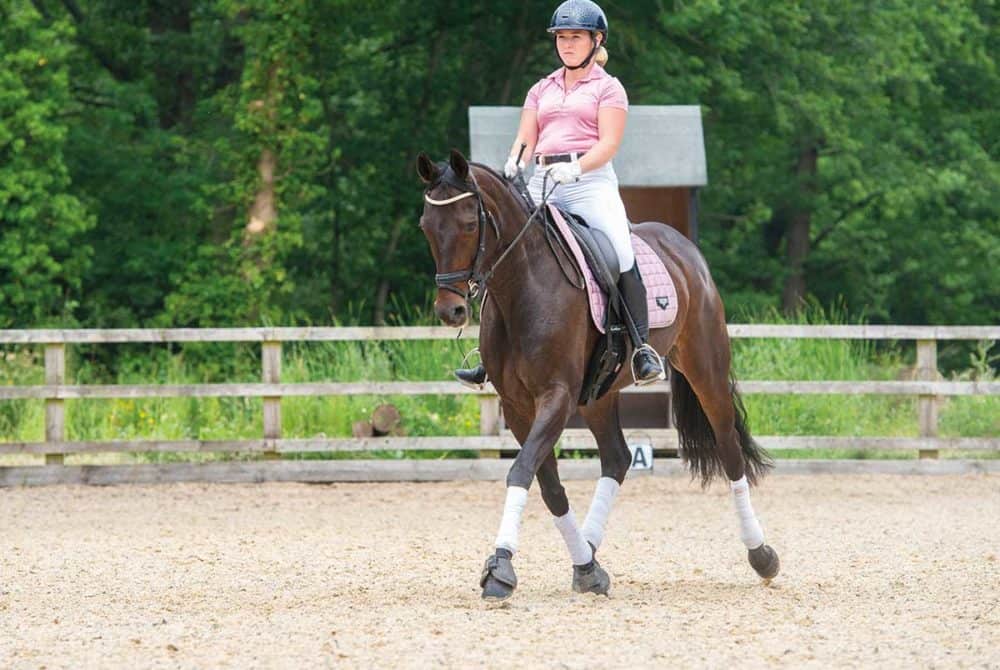Excel in your Elementary dressage test with Leanne Wall
Posted 6th October 2021
From leg-yield to rein back, Leanne Wall breaks down the movements found at Elementary level so you can excel in your next test

At Elementary level, the questions asked of horse and rider are certainly more of a challenge than those seen at Prelim and Novice. With direct transitions, lateral movements and an element of collection introduced, you’ll need to fine-tune your training so you can ask your horse to perform each movement with the accuracy, straightness and power required.
In the final instalment of my series, I’m going to talk you through some of the trickier movements you’ll need to tackle at this level and guide you through steps you can take at home that’ll leave you feeling confident that you can not only perform them in front of the judge, but also earn top marks.
Keep it simple
At Elementary you’ll be expected to make direct transitions, which is when you miss out a pace on your way to another – for example, halt to trot or canter to walk. One of the most common ways you’ll be expected to demonstrate a direct transition is with a simple change. At this level, simple changes are often placed between two half 10m circles. Your horse must come straight back to walk from canter, show 3–5 walk steps and then pick up canter again. It’s the precursor to a flying change, which can be found from Advanced Medium onwards.
The judge will be looking for your horse to stay engaged during the transitions and not bracing against the rein contact. His hindlegs should be engaged and in balance to maintain the impulsion, too. He’ll also need to stay straight and obedient to your aids so he can make the transitions as soon as you ask. Practising at home will help you learn how to best prepare your horse for the transitions.
How to achieve it
To help you get ready to ace this movement in a test situation, have a go at home first…
Prep, walk, canter
To perform a simple change, your horse needs to be engaged and focused on your aids so he can make the transition to walk without falling onto his forehand or relying on your rein to stop him. To test this, in canter, I like to count 3-2-1 and then walk. When asking for a downwards transition, sit tall and deep in the saddle and close your seat and lower leg to collect his pace. At the same time, aim to maintain a forward, balanced pace.
If you can’t do this without your horse falling back to trot too early, coming against your hand or interrupting his rhythm, you don’t have enough collection. Go back and spend some time working on condensing his pace. It’s important to teach your horse walk to canter and canter to walk on both reins independently. If you always string the two together to create a simple change, he’ll soon learn to anticipate it, which will cause tension and crookedness. If the walk steps aren’t clear then your mark will struggle to be beyond satisfactory.
Pick up your copy of December Horse&Rider, on sale 7 October 2021, for more dressage tips to help boost your Elementary scores.










